The real “story” of Hiveswap isn’t found in the universe of the game. Instead, when people talk about Hiveswap, the conversation is dominated by stories about the development and history of the game as a project, which started as a Kickstarter success story but then bounced from scandal to scandal for years. The story of how Andrew Hussie burned through a $2.5 million dollar investment over eight years to produce almost nothing is fascinating, convoluted, and poorly understood especially among newer Homestuck fans.
Right now, this meta-story mostly exists in the form of oral history. This is probably due to the fact that a lot of the key sources have now been deleted, but I think it’s also because it feels premature to write up a “postmortem” on a game’s development before it’s even an eighth of the way finished. Not canceled, just… in limbo. There is also significant pressure on people in the know — even fans who just lived through backing the project — to keep quiet about all this, for reasons I’ll get into.
I’m documenting the story so far so that the Hiveswap Story isn’t lost to time, and so there’s a decent summary of events so far, and maybe even so new Hiveswap fans can catch up. I dug through every page, announcement, interview, blog post, FAQ, and tweet I could find, and the culmination is this the most comprehensive — as far as I can tell — explanation of Hiveswap to date.
Throughout this article, emphasis within blockquotes is usually mine. I may in some cases add anchorlinks (dotted) as cross-references.
Disclaimer: While I have done my best to verify everything in this article, it’s entirely possible I got something wrong or missed something significant. If so, please let me know so I can make the relevant corrections.
Neither What Pumpkin nor Viz Media would respond to requests for comment. I’ve contacted them repeatedly, including after this article was published and members of the staff explicitly expressed concern over parts of this article, but they continue to refuse comment. Snake Solutions did respond to comment, but only to tell me to stylize Homestuck^2 as “homestuck 2”, which I am not going to do.
As part of my research I had the opportunity to speak with former employees from What Pumpkin Studios, but they wished to remain anonymous. (Likely due in part to due to fears of retaliation, due to What Pumpkin’s history of aggressive litigation against whistleblowing or other perceived criticism.) Some tips were submitted anonymously but then researched.
Executive Summary
This is a long article, so if you’re looking for something you can read in a few seconds, here it is.
In 2012, Andrew Hussie launched a Kickstarter for an adventure game based on his hit webcomic Homestuck. (x) The Kickstarter campaign was a massive success and raised $2.5 million. According to the original plans, the game (called Hiveswap) would be designed by What Pumpkin (Andrew’s company) and developed by a third party development studio (The Odd Gentlemen) and launched in 2014. (x) After repeated delays, What Pumpkin ditched The Odd Gentlemen (possibly due to some shady business (x)) and moved to in-house development, setting up an office (“What Pumpkin NYC”) in New York City. (x) What Pumpkin NYC continued development during most of 2015, until they were dissolved in favour of a completely different team doing exclusively remote work. The new team worked on a version of the game with a completely different art style, meaning years of work had to be discarded. (x)
Hiveswap was released in 2017, building off the work done by WP NYC but completely failing to credit them for their work. (x) Andrew Hussie sold Homestuck to Viz Media, a publishing giant with the resources to finish Hiveswap. (x) Viz Media sabotaged Hiveswap instead. (x) What Pumpkin continued to work on other for-profit games — instead of Hiveswap — that didn’t go towards fulfilling Kickstarter obligations. (x) Some of the new games cannibalized work that was meant for Act 2. (x) In 2019, What Pumpkin released a brief trailer for Act 2. (x) For a while What Pumpkin siphoned money from a Patreon account for an indie comic to spend on Hiveswap development, (x) but they’ve paused that since the comic itself has gone on indefinite hiatus. (x) Act 2 was released with significant controversy over accessibility issues and the game intentionally not crediting its artists. (x) Then Andrew buggered off. (x)
At present, What Pumpkin continues to work on for-profit projects while neglecting their obligations on Hiveswap. Despite not being bankrupt and having major investment, they refuse to produce Hiveswap OR give refunds to backers. It is hideous behaviour. (x)
September 2012
The Kickstarter Campaign
On September 4, 2012, Andrew Hussie launched a Kickstarter project for a point-and-click adventure game based on his comic, Homestuck.
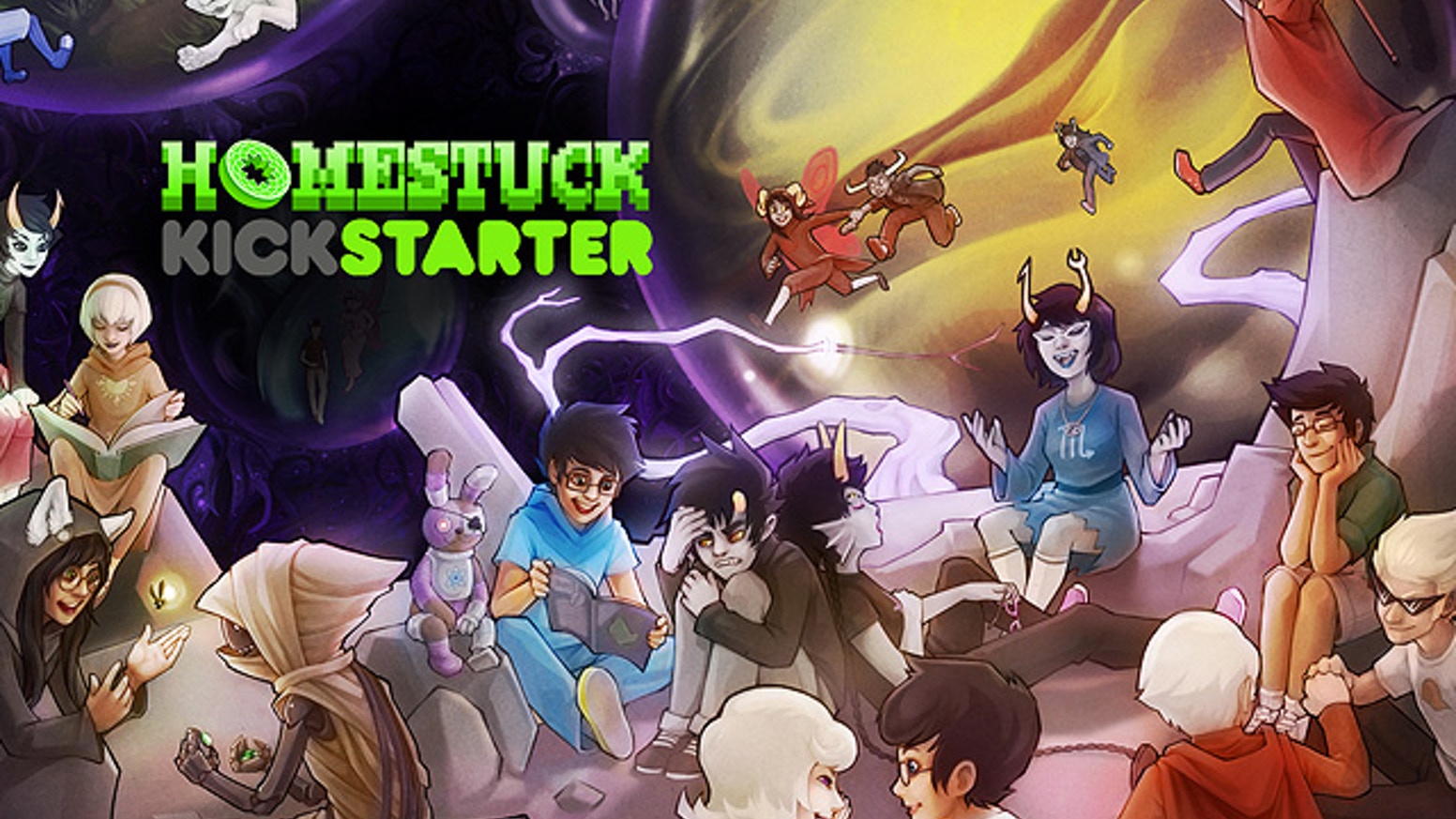
MSPaintAdventures had always been inspired by adventure games (like King’s Quest), even in its stories before Homestuck. As the Kickstarter campaign post explained:
Homestuck, like all other stories on MS Paint Adventures, was built on extensive parody of video games, most notably classic adventure games. The “mock adventure game” format has driven the creation of every page in the story, often with readers supplying commands for what the characters should do next. So for the project after Homestuck, I think it would not only be fitting, but quite exciting to present the story in the form of an actual adventure game. …
When [Homestuck is] complete, I’ll work with an independent game developer to create a game involving a new story based within the Homestuck universe—assuming this project is funded, of course. The readers, through their participation, have helped make Homestuck what it has become. They may continue to participate in Homestuck’s evolution by helping to fund this project!
The scope of the game was drafted out very roughly; it would be “like a spinoff” “based on homestuck” in a “shorter, self-contained story”. What Pumpkin (the company that handled homestuck merch) would be “working with an experienced game developer” for the development of the actual game. Once game development began, backers would get weekly updates.
The total funding goal of the project was $700,000. For $15, you could get a digital copy of the game, which was set to release some time in 2014. (Remember those numbers.)
(If you go to the live link on Kickstarter and scroll down to “Risks and challenges”, the field is empty, which is humorous in retrospect, but that’s just due to the Homestuck Kickstarter predating that field. No issue there.)
There was a very wide range of tiers available that included various combinations of merchandise (some exclusive to the Kickstarter, some not), the game, and the soundtrack. I’ll note a few of them here that are representative of the selection:
- $15: A digital download of the game
- $25: A digital download of the game plus the game soundtrack
- $55: Game, soundtrack, and a physical print
- $75: A limited-run physical edition of the game, signed by Andrew Hussie
- $100: The game, a shirt, some stickers, and some enamel pins
- $250: The game, a plushie, a tote bag, a shirt, some stickers, and some enamel pins
This was also the literal peak of the famously passionate Homestuck internet fandom. It was the perfect storm.
The project made its entire $700,000 goal within 32 hours.
As the project kept generating interest and support, they introduced stretch goals for the game, promising the extra funds would go to “higher production values.” As the project got more and more funding, they passed several stretch goals, adding more platforms, translations, merch, and an art book to the project. This was all fairly standard.1
Some of the stretch goals met included support of new platforms (Mac and Linux), multilanguage support (English, French, German, Italian, Spanish), a closed beta where all backers could beta test the adventure game, a “making-of” art book, and — at the very peak — a full digital copy of Homestuck (the comic) to be included with the physical game.
Andrew made another news post on the main Homestuck site on September 24, expressing extreme gratitude, going over a few logistics, and adding the option to back directly with PayPal.

On October 4, 2012, the Kickstarter campaign finished at 2.48 million dollars, plus an undisclosed amount of additional direct backing through PayPal that put them over the 2.5 million mark.2 (Andrew later confirmed this.) This number is noteworthy because it met their $2.5 million stretch goal, which added that digital copy of Homestuck (the comic) to be shipped with physical copies of the game. They made more than three times their original goal, and were the 6th most successful Kickstarter project of all time. Andrew made a news post and things were looking good. Andrew had been producing great content for years now; imagine what he could do with resources!
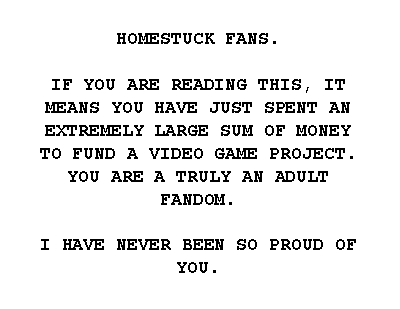
As of Update #36 from April 2021, What Pumpkin mentions that the campaign itself was actually managed and directed by George Rohac, crowdfunding specialist and WP’s one time Director of Business Development:
The Kickstarter was planned by the What Pumpkin business development team in mid 2012. One member of the team was a crowdfunding specialist who led the planning process and managed the contracts with the developer. Prior to the Kickstarter opening for pledges, What Pumpkin worked out a plan for a flexible game concept that could be refined according to how much the campaign ultimately brought in.
According to this post, the Kickstarter was planned with flexible funding in mind, so that the game could be made for as little as $700,000 but could also scale up if the Kickstarter made more than its initial goal (as it did). Excellent!
Learn about accountability on Kickstarter
But first, merch.
Before the game, though, came merch fulfillment for the Kickstarter rewards. An enormous amount of people contributed to the campaign, so the process of sending out backer surveys, collecting addresses, and doing the actual work of shipping items to 11,000 people was a significant amount of work.
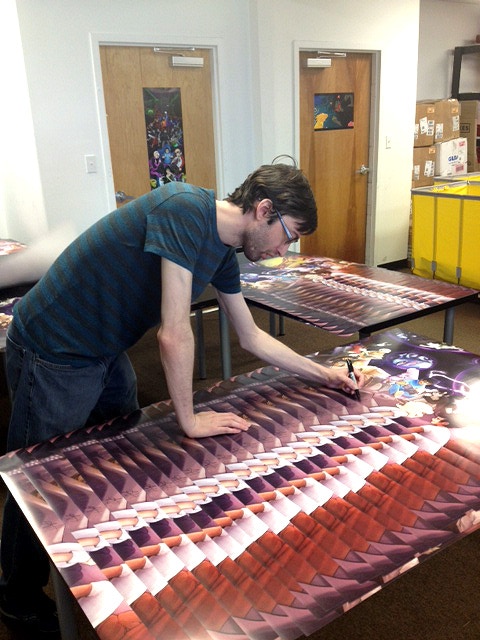
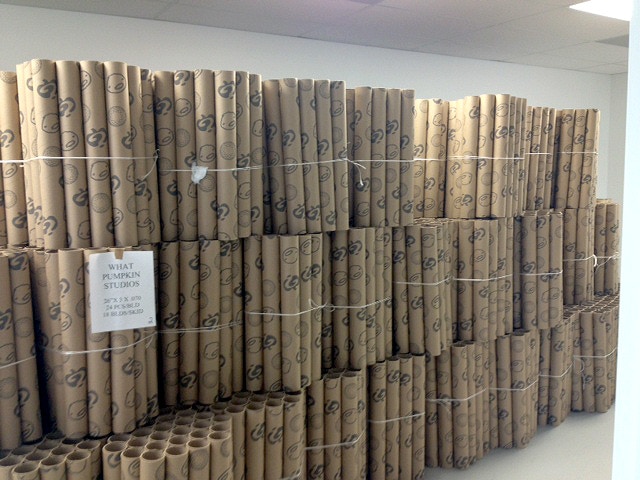
Regarding the merchandise, the Kickstarter campaign says
…the reward bundles here are so nice, that they actually still represent a pretty good value for the pledge. I think the scalemate plushes came out especially great. They are of almost impossibly high quality for something produced in bulk. This item is in very limited supply—note the finite number available for that tier. There are a couple more hidden bundles to be revealed later, but once they’re gone, that’s it! That’s all we have. But if the response to the scalemates turns out to be strong, we’re going to look into making more sometime next year.
It’s been noted that most (if not all) of the merchandise3 was, in fact, resold in other places since the campaign, but personally I’m glad it was, as it is very nice.
The signed physical print is a beautiful piece by Skeptic Archer. Oddly, it’s only credited in a small footnote at the end of the Kickstarter page, and the beautiful 36”x24” print is only signed (initialed) by Andrew. Odd art crediting is a minor note, but something to keep in mind going forward.
(This is unconfirmed, but according to a now-deleted comment, Rachel from What Pumpkin estimated the actual production budget for the game after merchandise and backer rewards as $1.6 million.)
As of Update 38, the $1.6 million number was confirmed. Further, the approximate cost of manufacturing and distributing Kickstarter rewards (which may or may not include rewards that have not been produced yet, WP leaves it ambiguous) was $730k.
Announcements about this came through Kickstarter project updates.
According to the FAQ,
A backers-only blog will be going up and weekly updates will tell you about behind-the-scenes work not only with regards to this game project, but also about how we choose, develop, and deliver the merch that you see in our store and in these paks. If you don’t become a backer, you will not receive access.
Future updates were meant to take place on a “backer blog”, which was to be a subforum on the MSPA Forums exclusive to Kickstarter backers, where What Pumpkin would keep backers updated on progress. The Kickstarter promises to give detailed weekly updates until the full game releases. This is, of course, entirely appropriate and expected for a project that was given $2.5 million — transparency is expected, and opacity is cause for suspicion and alarm.
The only news out of the Kickstarter was shipping updates until 2013.
Comic Gigapause
There had also been a brief note in the October news post for the latest comic hiatus that mentioned working on the Kickstarter project:
I also have to allocate some time to work on the Kickstarter game. That didn’t stop being a thing I have to do. It’s coming along. I’ll probably have a more substantive update on that before the end of the year. There hasn’t been much to report yet since it’s mostly been in a high level planning and writing phase. And firming up tons of legal minutiae. Stuff like that.
“Firming up tons of legal minutiae” here presumably describes doing legal footwork for the IP and setting the appropriate contracts with the “experienced game developer”.
December 2013
Update 1
Update #14 (Backers only)
Greetings, and Happy New Year. Welcome to the First Annual Homestuck Kickstarter Update of 2013!!!
On December 31, 2013, MSPA released the “First Annual Homestuck Kickstarter Update”. This was a much-anticipated behind the scenes look at the game design and high-level planning. This post mostly consisted of notes about how things were actually coming along, while trying not to spoil anything about the game. A few plot elements were confirmed or disconfirmed: it was revealed that Sburb would not be in the game, but trolls would be involved somehow. Stuff like that.
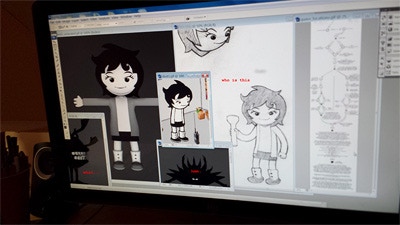
One new human character was shown, with rough sketches and a 3D model.
Andrew also teased the “experienced game developer” they would be working with for development, but did not reveal the company in the update. (This would later turn out to be The Odd Gentlemen.)
There was no news yet about the backer blog or how the weekly updates would be handled.
Namco High
December 2013 was also the release of Namco High, a dating sim developed by What Pumpkin Studios with Andrew Hussie as the game’s Creative Director.
Namco High is a simple visual novel. It’s primarily about characters from Namco franchises, but there are some stories about Homestuck characters mixed in as well that you could purchase and play. There are quite a few newsposts on the MSPA website.
June 2013: Undertale Kickstarter
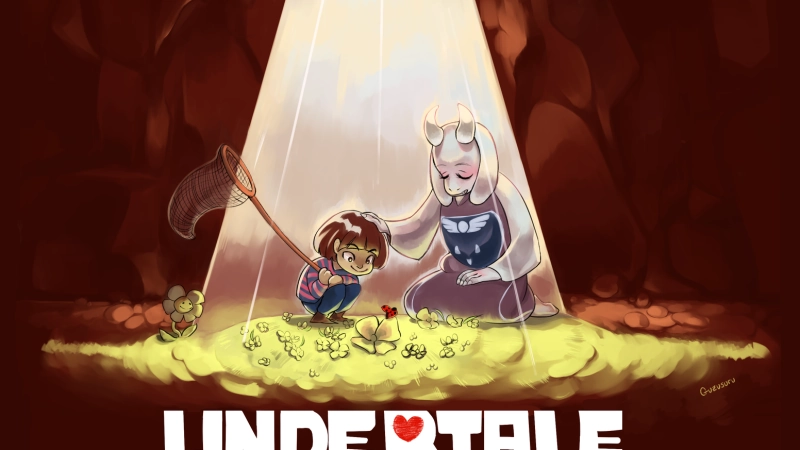 that’s not an edit, that’s the actual Kickstarter graphic. sic?
that’s not an edit, that’s the actual Kickstarter graphic. sic?
In June 2013, Toby Fox (known for his work on the music team) launched his own crowdfunding campaign on Kickstarter for a role-playing game. His goal was $5,000, and he ended up raising $51,000.
The Undertale Kickstarter very much piggybacked off the success of Homestuck’s; Toby Fox was best known from his work on Homestuck, and the Kickstarter campaign referenced Homestuck directly in a few different places. Toby Fox was friends with Andrew Hussie and would end up doing at least some of the work literally from Andrew’s basement:
Sep 15 07:07:00 +0000 2015@andrewhussie THANKS ANDREW!!! and i said it before but thanks for letting me start making undertale in your basement
Andrew Hussie, Update 22 Actually, yes, [Toby Fox] literally spent a period of time developing Undertale in my basement. I have always assumed this is why he titled the game as such.
June 2014: Update 2
Update #15 (Backers only)
Greetings again. Welcome to the Sequel to the First Annual Homestuck Kickstarter Update of 2013!!!
On June 20, 2014, MSPA released the second annual update.
This update was loaded with concept art of Alternian-looking environments, plus another 3D render: a troll this time. Andrew also teased that there would be some contributions from Ryan North.
There were also major updates about development status.
Aside from a bunch of dialogue, the writing and design work is all pretty much done. The game design documents comprise dozens of files, and around a couple hundred thousand words in total. There was a lot to think about besides just a story. Puzzles, game mechanics, the exact way every little thing works. Bringing such documents to completion involves a lot of effort. I assembled my own little team independently of the game developer to help me get this done.
Apparently, the writing and scriptwork are pretty much finished, and the game design is done too. This is great, and sounds on-track for a 2014 release.
Significantly, this update officially revealed the development studio: The Odd Gentlemen:
While we were still in the high level planning stages of this, I thought it would be better to keep the developer out of the limelight for a while, so we could all have some breathing room to get the project off the ground. I think this was the right decision. But I also think it’s been long enough keeping the backers in the dark on this. So,
The name of the developer is The Odd Gentlemen. It is a solid outfit, and I’ve enjoyed working with them so far. A lot of good stuff is happening behind the scenes. Expect to hear more from them about this project in the future.
…
Odd Gentlemen had the right combination of availability in their schedule, and the fact that I liked the people there and felt like they could deliver a good product. I am still confident this will be the case.
The Odd Gentlemen is a game studio run out of LA, California. It was also in the process of developing an episodic King’s Quest adventure game from around 2014 through 2016 as a follow-up to the hit Sierra adventure game series.
The next day on June 21 The Odd Gentlemen released a very similar blog post confirming their involvement. Later in July they made another blog post about Hiveswap cosplay. (Both of these posts have now been scrubbed.)
2014 was the year Hiveswap was slated for release, so they were cutting it close — Andrew addressed this concern directly:
2014 was the year we were shooting for release. Note there was no target month given, because I really didn’t know what the timeframe was down to that level of specificity. I expected there would be bumps in the road, because there always are for big projects like this. When the Kickstarter ended, that is not really when development began in earnest. That’s when we began getting a lot of boring legal stuff in order, which took a while. Probably around six months I’d say. After that, planning began for real. So if we are behind schedule (which may not even be technically true), I guess it could be by that amount of time. But I’m anticipating a major surge in development in the latter half of 2014. So we’ll see where we are as we approach the end of the year.
Thanks for the patience!!!
(Note that there was, in fact, an estimated target month given in the backer rewards’ estimate: June 2014)
This update could also be interpreted as the first of the weekly updates the Kickstarter promised, except it was not followed with another update the next week. In fact, the commitment for weekly updates was never honored — not ever. For the rest of the project, there would never be development updates posted within a week of each other. This was the first of a very, very long string of broken commitments.
October 2014: What Pumpkin Studios
Update #16 (Public)
There are some updates to mention. Some changes to the plan. Exciting changes!
On October 30, 2014, the Kickstarter received an extremely significant update about the game and the project lifecycle that made major changes to the structure of the development process and the game:
What Pumpkin is now the development studio
Over the last several months, we’ve been shifting the development operation from the previous studio over to What Pumpkin. We have both agreed it will be the best move to continue production in-house, given the future game development plans for the Homestuck property (more on that further down). So this means exactly what it sounds like. As of this moment, in addition to everything else What Pumpkin does, it is officially now a game dev studio as well. Pretty cool!
Setting up a game dev studio from scratch is fairly tricky however. Hiring new people, getting them up to speed, and setting up the infrastructure represents a bump in the road on our previously devised rollout schedule. The original plan had us testing the game by this point. Looks like testing within first half of next year is more likely.
…
But given that we have decided to pull a game dev studio out of thin air over the last couple months, it has gone alarmingly well. All the hiring was done quickly, and people have been cranking out great stuff (see samples above, all of which was done in-house). I’m pretty psyched about the new team!
The game is no longer being developed by The Odd Gentlemen, allegedly due to “the future game development plans for the Homestuck property”. As far as I can tell, The Odd Gentlemen never mention Homestuck again after the two blog posts already mentioned. What Pumpkin will now expand and, in addition to its existing responsibilities handling the merchandise for Homestuck and Hiveswap, become a game studio “out of thin air”.
There will be two games
So as a result, from the start I conceived of a story that revolved around the idea of there eventually being two games
…
The second game is not intended as a sequel though. It is meant to be a story told in parallel with the first. So when both games are finished, people will be able to play them in either order.
There will be two games with parallel storylines. They will be produced sequentially, but can be played alternating once both are released to get the full story in sequence. (This seems to be a similar concept to what would become the Homestuck Epilogues, years later.)
The entire first game would be considered the “Homestuck Adventure Game” that was funded by the original crowdfunding campaign and owed to backers. Presumably, the second game would be funded by profits off the first game and the rest of the franchise, or perhaps by a separate Kickstarter. Regardless, backers would not be entitled to the second game.
The first game is called “Hiveswap”
This is the title of the first game.
The first game, Hiveswap, is the Homestuck Adventure Game that the Kickstarter supported. The second game (which will later be titled Hauntswitch) will be released later.
Hiveswap is now episodic
When I say “first game” and “second game”, I mean those will be two distinct storylines that each consist of several episodes to be released in sequence. Four episodes per game is looking likely. The fact that there will be multiple installments won’t change much for backers. Anyone who backed will be entitled to each download for the first game. I’m sure there will be other questions that come up as a result of this release model, such as how physical copies are handled, but just keep in mind that we’ll be working things out to stay favorable to backers. We’ll have more answers as things take shape.
Designing the story around two games is an old idea, based on having a plan in place to continue the series if the demand is there. But releasing each one episodically is a new idea, based more on the emerging realities of production. I think it’s the right call, both to get something out sooner, but also I think it will add some dimension to the story itself and the way it’s received. Much of the fun for Homestuck readers was in following an ongoing story, getting together with other readers and discussing new developments. So releasing the game like this should preserve that part of the experience somewhat. Leaving some space between episodes should build some anticipation for what happens next. I suspect a lot of people will enjoy the story more this way.
Instead of releasing a complete game, Hiveswap will be released in (probably four) episodes, due in part to “the emerging realities of production”. Hussie also seems to believe that the serial nature of the comic will translate well to the game, and actually enhance the experience for players.
Episodic game development is known as being an especially high-risk game development strategy. From Wikipedia:
Essentially, the business model of the episodic gaming is still considered high-risk for developers… Experts cite that this can be demonstrated in the limited number of successes of episodic game ventures. Specific disadvantages include the following:
…
- Some developers choose the episodic model because they lack the resources to complete a full-length game, and hope the sales of episodes will fund further development. If earlier episodes fail to sell, then funding for future episodes may suffer or disappear, forcing developers to renege on promises of future episodes and cut storylines short.
I’m quoting from Wikipedia here to emphasize the point that this isn’t an industry secret; the disadvantages and risks of the episodic business model are well-known. Just saying the phrase “episodic” immediately brings to mind that one example you’re already thinking of.
Andrew assures everyone that “The fact that there will be multiple installments won’t change much for backers” and “we’ll be working things out to stay favorable to backers.” (He will not follow through on this.)
Concept Art Dump
This update was front-loaded with a “concept art dump” that closely resembles the game that would become Hiveswap: Act 1, including designs for the manor, attic, treehouse, Alternia, and portal.
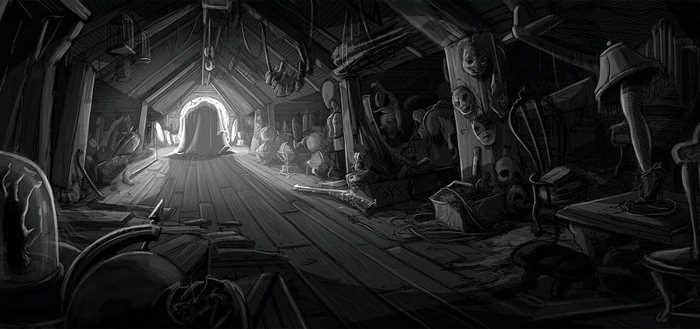
This post also included 3D models rigged with animation! Very exciting stuff.
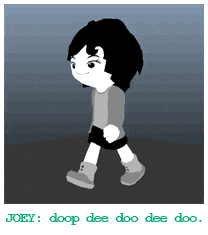
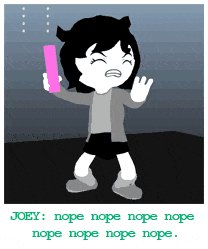
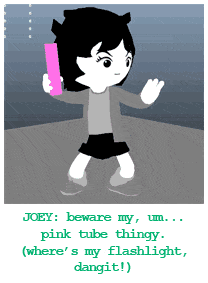
The Odd Gentlemen
Edit: After I wrote this article, I published a separate article based on leaks about this specific topic: read my second Hiveswap article for much more information on this topic. Do note though that the other article is more speculative than this one.
King’s Quest and The Odd Gentlemen
or, The Odd Gentlemen robbed us, as ipgd titled it.
In July 2015 (the future), ipgd, friend of Andrew’s and general insider published a post (alt) that was the culmination of their research into the Kickstarter:
i’m sure that everyone has noticed by now that the homestuck game is very, very late. boy, do i have a fun reason why!
you may remember that what pumpkin announced that the game studio “the odd gentlemen” was originally attached to develop the game, and you may also remember that they quietly moved to in house development in 2014. what they didn’t tell you: the reason they did this was that odd gentlemen stole kickstarter money and spent it on king’s quest.
i imagine most of us who backed the homestuck game kickstarter are pretty curious about what was going on there. i’ve done some work on the comic and talk to andrew from time to time, so i tried asking about what happened and got some very cagey non-responses. eventually, he tells me he actually can’t tell me anywhere but through kickstarter because of a settlement he signed (already fishy). so, i sent in an inquiry through KS and what i got was a big steaming load of bullshit worse than anything i could have imagined. i’m talking multiple counts of embezzlement and fraud.
according to the timeline in the doc i got, WP gave 788k to TOG in 2012 to develop hiveswap. they then proceeded to do next to nothing, completely blowing off the dev schedule that they agreed to. (the game was supposed to be done by oct 2014. instead, that was when WP ended up having to switch to in house development and start from scratch.) the doc included a detailed rundown of everything TOG actually did. in summary:
“Over 8 months of development, TOG produced exactly one “playable build”. It is a single room, involving one character, no animation, and almost no other key features. Virtually nothing works properly. It was submitted in February of 2014, and no improvements or additional versions were submitted beyond that date.”
a link to it was included in the doc. it’s… probably the worst thing i’ve ever seen in my life?? if you try to click on ANYTHING, joey runs into a bookcase and flies into the air and the demo gets stuck. the only thing that distinguishes it from an out-of-the-box adventure creator demo is its very subpar models and the fact it is unplayably bugged.
at some point TOG apparently just completely gave up working on hiveswap, because they were tapped to develop king’s quest (you can see them admit this in public here at about 1 minute into this video). however, instead of dropping out of developing the game, they decided to just… not tell WP, and proceeded to spend the money they were given on KQ’s development instead.
eventually, after months of platitudes and refusals to communicate (at one point andrew even moved across the country to be able to visit TOG’s offices and get the ball rolling on development, but they wouldn’t even let him come in), WP realized that they’d have to drop TOG, so they terminated the contract in late 2014.
at that stage, TOG said they had 390,000 dollars left of the money WP gave them that they hadn’t spent on “development” or taxes. but, get this – in the 7 months it took them to agree on a settlement for returning the money, they spent 170,000 of it on king’s quest. seriously. like, they didn’t even try to hide it – they straight up spent it after they’d already officially stopped working on the game, and were just like, haha, whoops? pay you back later i guess.
this isn’t acknowledged in a binding settlement like the king’s quest embezzlement is, but i’m pretty sure most of the 190k they claim they spent on hiveswap’s development before they picked up KQ went into neil gaiman’s wayward manor. they picked THAT up at around the time they were supposed to start working on hiveswap, and admitted the workload was conflicting with their ability to devote time to hiveswap. given the egregiously overstated man hours claimed for how little work they actually did, and the fact they admittedly stole the money for another game, i think it’s a pretty obvious conclusion to reach.
it doesn’t look like there was ever a point where TOG wasn’t funneling homestuck’s KS money into another game. it’s unclear whether they EVER actually intended to seriously develop the game. they straight up signed up to steal money from us.
andrew mentioned that this was one of the biggest reasons for the gigapause, and that all the logistics of dealing with TOG’s incompetence meant he couldn’t get much work done on the comic in that time.
why am i posting this? well, king’s quest was developed with stolen money, so it’s probably in your best interest to know this before you buy it. all things considered, it’s a miracle that hiveswap is doing as well as it is – at this point, i think hiveswap has moved past this fiasco and isn’t in any danger of falling through. it’s uh, pretty late, but from what i’ve seen, they’re well on their way to an Actual Game that may be Actually Good despite getting jerked around by a circus of incompetent clowns for 8 months.
at this point, i’m not sure what to DO about this. what pumpkin is bound by the settlement they had to sign if they wanted to get any of the money back at all, so there’s not much that they themselves can do to retrieve the money TOG stole from us. i actually tried messaging sierra, the company that licensed KQ to TOG, but they don’t seem to care that KQ was made with stolen money. maybe activision might want to know. in any case, it’s important that this info get out there so people know what they’re dealing with when buying something from the odd gentlemen.
The key allegations ipgd makes here are:
- What Pumpkin paid The Odd Gentlemen $788k to develop Hiveswap by October 2014
- The Odd Gentlemen did not meet the agreed-upon schedule
- The only thing The Odd Gentlemen produced for Hiveswap was an awful and unusable demo
- The Odd Gentlemen being horrible forced What Pumpkin to switch to in-house development in order to produce the game at all
- TOG spent a significant amount of What Pumpkin’s money on King’s Quest instead of Hiveswap
- Even after they were told to stop entirely, they kept siphoning money
- What Pumpkin eventually got a formal settlement
- Including admission of wrongdoing from TOG
- But the details of the settlement were kept secret even from the development team and other insiders
As of late 2014, What Pumpkin was left with ~$200k and no gameThe ~$200k number here is only what What Pumpkin was able to reclaim from the TOG contract; this does not include their other operating funds or the other revenue that should still have been left over from the Kickstarter campaign.
Andrew Hussie himself later explicitly “no-comment”ed on the allegations:
Replying to ryan5162000:Jul 4 07:07:00 +0000 2015@ryan5162000 post wasn't official in any capacity. asked the user to delete it. i have no comment on matters between WP and TOG.
Of particular note is the sentence “i have no comment on matters between WP and TOG”, which is exactly what you’d have to say if you had settled with a binding NDA, as is the claim.
Not only did ipgd take down the original Tumblr post, since then, someone (either WP or ipgd herself) submitted a special request to the wayback machine to manually prevent the blog from being archived. (See here.)
Fact-checking ipgd
There isn’t actually a way to request an “inquiry through KS”; Kickstarter doesn’t know anything about the internals of the project other than updates the creator posts publicly. From what I can tell, if this account is true,4 Andrew Hussie voluntarily sent ipgd this information through a Kickstarter private message in order to circumvent some provision in the settlement. Given that this information is essentially leaked by Andrew himself, it’s worth being skeptical.
Some of ipgd’s accusations fit in neatly with other accounts, and fill in a number of holes. These are all thoroughly supported by later events and accounts:
- What Pumpkin paid The Odd Gentlemen $788k to develop Hiveswap by October 2014
- The Odd Gentlemen did not meet the agreed-upon schedule
- The only thing The Odd Gentlemen produced for Hiveswap was an awful and unusable demo
- What Pumpkin eventually got a formal settlement
- But the details of the settlement were kept secret even from the development team and other insiders
Each of these points fits neatly with all the other available information as I understand it, and I haven’t found any reason to think that any of them are untrue. Later events will explicitly confirm many of these points as true, creating a lot of circumstantial evidence supporting the full list of allegations, which led people to believe the full story for years. It’s confirmed that What Pumpkin did get a formal settlement with TOG, for example. What Pumpkin later cited the exact $788k number, implying that ipgd had some insider knowledge at this point. As another example, an anonymous source who used to work at What Pumpkin confirmed the point about the broken prototype:
Personally I think it was that Hussie was in over his head. When we took the reins after odd gentleman, you should have seen how bad the demo was. It looked like an intern had made it.
I don’t know the details about the court case, bc that was secretive, but I believe they settled. They had spent I think almost a third of the money and it was total garbage.
Another account about the prototype:
We were given an unusable piece of garbage to work with.
There is also some evidence of similar behavior from The Odd Gentlemen, where they began developing Wayward Manor as a third party but then seemingly bailed and scrubbed their name from the records before release. There is little to no information on this, and most controversy about Wayward Manor seems to stem from speculation about Hiveswap, rather than the other way around.
While I’d love to speculate as to why What Pumpkin didn’t have the legal leverage to demand restitution, or why What Pumpkin chose to sign the NDA instead of staying accountable to the project underwriters, I don’t yet have the evidence to do so meaningfully. (I don’t know why they kept it a secret, because they kept it a secret.)
Some of the allegations, however, haven’t been corroborated since, and seem unlikely:
- The Odd Gentlemen being horrible forced What Pumpkin to switch to in-house development in order to produce the game at all
- TOG spent a significant amount of What Pumpkin’s money on King’s Quest instead of Hiveswap, explicitly embezzling from What Pumpkin
- Even after they were told to stop entirely, they kept siphoning money, explicitly embezzling from What Pumpkin
As mentioned previously, these were leaked together by ipgd and Andrew. These details are protected by the settlement, so even if they’re not true, there’s likely nothing TOG could do to refute them. These could very easily be either completely false or deliberately exaggerated in Andrew’s favor.
And some have even been confirmed explicitly to be false:
- The only thing The Odd Gentlemen produced for What Pumpkin was an awful and unusable demo
In January 2021, I broke a report about accusations that The Odd Gentlemen were actually engaged on animation work for Homestuck Act 7 during this time period. Update #36 later explicitly confirmed this part of the leak as true.
Edit: Again, read my second Hiveswap article for much more information on this topic.
February 2015: Hiveswap is Coming
Update #17 (Public)
This update features more concept art (mostly just colored versions of art seen previously) and what appear to be game renders.
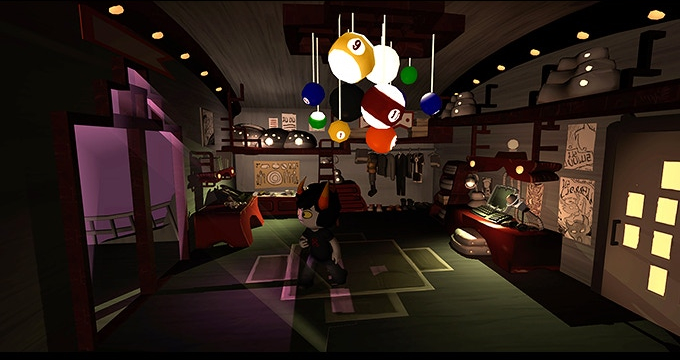
Notably, the game is still 3D. All the character assets we’ve seen up to this point have been 3D, and presumably all the animation was done using 3D models too, so this all makes sense.
There are then a number of links to a new Hiveswap website and social media accounts. We then get another look into the development going on:
Being privy to all the work being done, I can tell you it’s not only looking great, but it bears mentioning how FAST all this work has been materializing. To put this in perspective, recall that last Fall I mentioned we switched tracks and brought all game development in-house, under the What Pumpkin banner. We thought this was the best move for the future of the project, but realistically it also meant nearly a total production reboot. The move involved some risk, requiring an entire dev operation to be assembled from the ground-up almost overnight. Back in October of last year we hadn’t even bought, like… computers. There weren’t even computers yet, ok? You kind of need those, people kept telling me. But in the few months since then, somehow this crazy game making machine appeared out of thin air, caught fire, and now most of an episode has been drawn, modeled, textured, animated, all that. And the weird thing is, not just how quickly it’s coming together, but considering the speed it’s like… freakishly good? It shouldn’t be this good.
(This seems to imply that the previous update, including the models and animations, were leftover work from The Odd Gentlemen — though that may not be the case.)
All I can do, aside from mumble to myself like a wizard just played a trick on me, is give credit to the fantastic people on WP’s dev team, and James and Jess (senior producer and creative director) who brought all these people together so quickly and are keeping everyone on task.
It’s concerning here that all we’re getting about the now-late game are these brush-off “it’s fine” pacification answers. I get Andrew is trying to be cute here, but given that Hiveswap had officially missed the Kickstarter release date of 2014, and Andrew is already behind on delivering on the project, this is pretty unprofessional.
Besides that, this mostly looks okay. What Pumpkin NYC is doing impressive work, which is to be expected from the talented team What Pumpkin managed to assemble. James here is James Seetal, a game industry veteran with an impressive resume. They are slated to be the senior producer of Hiveswap. Jess is Jess Haskins. She is Paperback Studio. This would be the first Homestuck credit for either of them.
The release date for Hiveswap is delayed to Spring 2015.
March 2015
Hiveswap Friends
Update #18 (Public)
This update is another asset update. The main piece is a video, featuring high-quality views of the 3D character models. There are some more character designs, also with 3D models. This is going to be a 3D game.
Andrew reveals the music team for Hiveswap: James Roach (known at the time for his fan music as part of The Homestuck Fan Musicians and tracks on coloUrs and mayhem and Toby Fox (known for his work in the music team and Undertale, which would release in September 2015).
We also hear something about more troll symbols:
The original Homestuck trolls corresponded with zodiac signs, of course. You can see these ones are wearing different symbols. We ended up making quite a few new ones to create an “expanded zodiac.” Around 250, actually. The majority of which won’t appear in the game, but we made a bunch of extra ones I guess in case of an emergency. This can be considered the canonical extended set of troll symbols. I’ll let you see them later, in a more meaningful context. If there is really such a thing as a meaningful context for 250 fake zodiac signs.
Emerald City ComicCon
There is another post shortly after about What Pumpkin having a booth at Emerald City ComicCon. We get this interesting tidbit about a playable demo of the game:
If you’re one of the thousands of comics and gaming fans who’ll be hitting the Seattle Convention Center this weekend for ECCC, don’t miss your chance to visit What Pumpkin at booth #305 to try a preview segment of Hiveswap. Bear in mind this is an early preview of a work in progress. It’s one room, with some features disabled, but it’s playable, looks very good, and gives a strong sense of what it will be like to play it. It’s not the sort of thing we can put online anywhere yet, but we’re more than happy to let people visiting the booth try it out on our machine.
There is some footage of this version:
It’s a fully-3D version of Joey’s room, with an inventory, and pointing and clicking. Great!
Hiveswap Press Sheet
Around this time, What Pumpkin Studios NYC released a press sheet about Hiveswap. This is a one-sheet that just lays out the basics: developed by What Pumpkin NYC, four acts, releasing throughout 2015, “describing what an adventure game is”, that sort of thing. It also compliments how good the game is, as press sheets are liable to do.
GDC Italian Interview
A GDC interview given in Italian revealed a few more details about the game.
Some translations from a reddit thread:
- It will be out on MAY, split into four parts and available for PC, Mac and Linux.
- “the graphics are a bit outdated, but recall the webcomic’s drawing style and upgrade it to 3D”
There were also a few plot details that were confirmed by later updates.
April 2015
Jess Haskins Gameplay Preview
(These names are somewhat misleading: the “Gameplay Walkthrough”, doesn’t feature gameplay, but is rather a narrated slideshow of concept art and renders.)
These two videos of “Prototype 1.1” were posted to “GamerHubTV” and are narrated by Jess Haskins. The gameplay looks very similar to the Emerald City ComicCon demo.
The prototype version has multiple playable characters (Jude, Joey, and Xefros) with 3D models. (Joey is wearing a dog shirt that has not yet been seen in any other media.)
The Gameplay Preview includes a sample of the 3D intro cutscene with Joey and Jude, and some 3D adventure game gameplay with adventure game commands and a sylladex inventory. There are several 3D maps available, including Joey’s room, Jude’s treehouse, and a basement. It ends with another 3D cutscene featuring the cherub portal in the attic.
Kickstarter Update & Trailer
Update #20 (Public)
Have you noticed that we’re posting more updates lately? That’s because things are really moving on the game right now, and there’s a lot of exciting progress to report.
This last trailer was also posted on the WP NYC Tumblr.
Gameplay!
There was some criticism of the gameplay trailer for the low framerate and lack of a specified release date. But we have the makings of a game here! And don’t worry, it’s definitely still in 3D. Why would it not be in 3D? Everything is okay.
(We’ll later be told that this trailer was posted to YouTube by the office manager before it was ready, and without the go-ahead from the art team or anyone involved. This could explain issues like the low framerate and unfinished textures.)
Backers are encouraged to pay attention to What Pumpkin Studios’ new YouTube channel, “since we’ll be posting more cool stuff there in the coming months as we get closer to the game’s release.” The two videos from GamerHubTV were never uploaded to the official YouTube channel. (In fact, nothing was uploaded to the YouTube channel after this point.)
What Pumpkin’s acting Creative Director, Jess Haskins, also gave several interviews about the making of the game at Review Fix, Tap Repeatedly, and Hey Poor Player:
Review Fix: Jess Haskins talks Hiveswap
Review Fix: What has the development process been like thus far?
Haskins: It’s been kind of crazy, but going really well so far. The game is a spin-off of the Homestuck webcomic and was funded a couple of years ago on Kickstarter. After that, the script was in a sort of gestation period for a long time as we worked on building up the world and filling out and refining the story during pre-production. Back then I was working on it as writer/narrative designer/game designer along with Andrew Hussie, the creator of the webcomic, and our assistant producer Mike Christatos, who helped develop the characters and story. Last year we founded a game development studio basically from scratch here in NYC to launch into the production phase, and since then we’ve been plowing ahead full steam. Since going into active production it’s really been coming together in quite a short time.
Day one in the new office we had a skeleton team of me, our senior producer, our lead artist, and one animator. We were still waiting for our lead programmer to serve out his two weeks’ notice at his last position so he could come in! The team grew very fast from that point, though, up to a current total of 12 full time here in the office.
When we all saw the very first test animations come back, Joey walking around and wielding her flashlight, we were just floored. After designing and writing and talking about these characters for so long, actually seeing them alive and moving across our screens was like a revelation. Since then we’ve been moving forward in leaps and bounds, and the first episode (out of four) should be out this spring
Review Fix: Lets [sic] talk about the visuals. How tough as it been to capture the look that you wanted?
Haskins: It’s been interesting translating Homestuck’s 2D aesthetic, or I should say the many different 2D aesthetics as they evolved over time, into a 3D format. We wanted something that was visibly grounded in the comic’s visual style, but with a 3D environment we had some room to play around with the way it was rendered and create something unique.
We didn’t want to be slaves to the look of source material, which was very informed by its methods of production – heavy photomanipulation and stark colorization on the backgrounds, copy-paste static sprites, wacky 2-frame Flash animations. We couldn’t just copy that and have it look right. So we have things like 3D modeled characters with animated 2D textures for their facial expressions, and a toon shader that gives a light 2D outline effect to the characters, walking around in a slightly cartoony, stylized 3D world. But we always go back to the comic for reference, and find ways we can bring elements of its visuals into this game.
Review Fix: How important was the fans’ support in the creation of this game?
Haskins: Absolutely huge. This project wouldn’t exist without the enthusiastic outpouring of support we received from our fans and backers on Kickstarter, so thank you! We took to Kickstarter asking for $700,000 to make a small little adventure game, and wound up with $2.48M in pledges. So it’s no longer a small little game! We were given a license – no, a mandate! – to go out and create something really amazing, so that’s what we’re doing.
On another level, many Homestuck readers and fans actually go on to work for us professionally, contributing to projects like the Paradox Space series of spin-off comics, or lending their skills as artists, musicians, and writers to the game. Like Mallory Dyer, an insanely talented artist who makes these incredibly detailed plush dolls of Homestuck characters – fabric sculptures, really – and now works for us doing a bunch of our concept and 2D art. Or Phil Gibson, who’s worked on the Paradox Space comics and does double duty as both dialog writer and artist concepting our NPC designs. In addition to the full-time staff who are part of our New York studio, we have a big team of remote contractors and freelancers all over the world who are passionate, talented fans and were just so amazing at what they did that we had to hire them.
Tap Repeatedly: Hiveswap
Andrew Hussie is, according to Haskins, highly involved in storytelling for the project and creating high level vision. Drafts are sent to him, and it’s “very collaborative,” but the project isn’t micromanaged by the creator either. Experienced game developers on the What Pumpkin team have a lot of input. Haskins also mentioned Ryan North, of Dinosaur Comics fame, as an early collaborator on the game’s high level story. Haskins herself was brought on to the Hiveswap project as a game designer after the Kickstarter ended along with the New York based studio. Haskins has worked on a variety of games, from puzzle platformers and social games to the multi-player shooter Guns of Icarus Online.
Hey Poor Player: Hiveswap’s Jess Haskins
Jay: Hiveswap got its start as a Kickstarter campaign, which saw monumental success. Did the projects crowdfunding success expand the scope of what you could do with the game?
Jess: It definitely did. What we would have been able to achieve with the original funding goal would have still been neat and fun and interesting, but much more modest in scope. There’s a certain kind of epicness that’s part of the feel of Homestuck, not just in the cosmic sweep of the story but in the sheer amount of content and attention to detail. It’s wonderful to have the budget to be able to think a little bigger and make the game feel grand and epic as well, and we’re touched and grateful for the outpouring of support the project received to make that happen.
Jay: We know the game will be episodic in nature. How big, both in time and scope, will the episodes be? And what made the team decide on an episodic format?
Jess: The episodes themselves (which we call Acts; there will be four Acts in total) will be pretty hefty – a fair bit longer than, say, a typical Telltale episode. That was one of the reasons for breaking it up, because each Act will take a good chunk of time to play and spacing them out will make them a little more digestible. There’s room to play, discuss, mull it over, maybe replay and try some different choices, and have something left to anticipate and look forward to. That’s part of the structure of the webcomic, as well – big, action-packed Acts with a lot of drama and twists and turns, and then a pause to build up excitement and anticipation before the next content release.
Plus, we’re really excited to share the game with the world, and releasing it episodically lets us get it into players’ hands that much sooner.
Jay: Hiveswap was originally announced to be a collaborative effort with indie studio The Odd Gentlemen, but has now been moved to What Pumpkin. What made What Pumpkin a better choice?
Jess: Forming a game studio and bringing the project in-house was a big development for us, obviously! We have a bunch of game ideas for the Hiveswap universe and beyond, so it just made sense to move all production in-house. It opens up the opportunity for us to work on other game projects in the future once Hiveswap is completed, if all goes well. It’s been nice to have a direct line between the creative vision of Andrew Hussie and the writers to the rest of the development team.
When we started the studio I was the sole What Pumpkin employee working full-time on the project as writer and game designer, and we were fortunate in that there’s a great pool of creative talent here in New York City. That’s where I’m based, and where we established the game-development branch of the company. We were able to very quickly put together a wonderful team and dive right into production work, and since then we’ve been making great progress. It’s been really exciting to see the game come together.
(Again, Jess’s answer here to the question about in-house production isn’t true.)
Jay: It was said in an update about the game that development was going “alarmingly well.” What have some of the biggest surprises and challenges been along the way?
Jess: A lot of it is just the basic challenges of any software development, but especially games – establishing our tools and pipeline, building out the core features of the game, and getting it all working seamlessly and bug-free. We’re developing the game in Unity, and we’re building our own adventure game engine on top of that. We looked at a few off-the-shelf options, but apart from some piecemeal plugins and tools, none of them really offered what we needed. Apart from the game engine, we’re also building our own custom tools for managing data, since everything we looked at was either overpowered for our needs or really lacking in flexibility.
The first and biggest hurdle has been just getting the first playable room, which requires basically the whole asset integration pipeline and all the game systems and features to be in place and working together. After that, it’s all just content creation. This is a huge game with a lot of content, but we have a bunch of brilliant writers and awesomely talented artists cranking out loads of funny jokes and beautiful art. We might be going faster if we didn’t have to stop all the time to goggle at the new assets or laugh at stuff in the script as it comes in, but it’s that good.
Jay: Hiveswap is planned to be the first in a pair of games that will round out the original Kickstarter-funded project. What then? Are there plans or ideas floating around for future game projects once this is done?
Jess: There are always tons of ideas, but nothing concrete after Hiveswap and the companion game, which we plan to make if the first one does well. At that point we’ll have two big games spanning eight episodes under our belt, and be ready to take over the world. Obviously we would love to keep working on stuff and keep making projects after that. So we really really want Hiveswap to do well! We hope people have as much fun playing it as we’re having while making it.
“King’s Quest in Good Hands”
While seemingly not directly related to Hiveswap, The Odd Gentlemen gave a video interview with Polygon about the King’s Quest project, which contained this quote from Rob Thompson, The Odd Gentlemen’s lead engineer:
When Lindsey [Lindsey Rostal, Producer at The Odd Gentlemen] came to me, she actually gave me a choice; we had another project going on and she’s like “You want this or you want King’s Quest” — King’s Quest, no doubt, give it to me, I can’t wait, I can’t wait to get started.
This is noteworthy here because, as far as I can tell, the only other project The Odd Gentlemen had going on at this time was Hiveswap. With that in mind, it makes it seem like the staff at The Odd Gentlemen was very excited about King’s Quest and relatively disinterested in Hiveswap, which is obviously concerning. Are they just openly saying here that they’re not interested in Hiveswap and are happy to keep their best people off the project? And if they’re not interested in Hiveswap — or working with Andrew — why? (See other article)
What Pumpkin NYC Tumblr

What Pumpkin NYC makes their first introductory post on their Tumblr (now deleted), kicking off a few introductory posts about their offices and the apparently compulsory homestuck references.
What Pumpkin NYC would continue to post aggressively and interact with the fandom.
Offline, What Pumpkin would also do some miscellaneous work for Homestuck that wasn’t related to the adventure game, like managing art for Volume 10.
There was also a remote team of developers who did work for the game but weren’t physically colocated with WP NYC, as mentioned briefly in the Review Fix interview. This team included people like writer Cohen Edenfield, animator Angela Sham, artists Shelby Cragg and H. “Rah” Esdaile, and musicians James Roach and Toby Fox, to name a few.
May 2015
GameNews.ovh Interview
In May 2015, yet another interview with Jess Haskins came out on now entirely defunct website gamenews.ovh confirming that “Hiveswap Act 1 is due to launch in Q2 2015”, which was imminent.
There were a few questions about the new episodic direction of the game, but Jess insisted that there was no cause for concern:
The game is due to launch a full year after the date in the initial Kickstarter pitch, but Jess assured us that the project is otherwise running smoothly, and that its episodic structure is no cause for alarm.
One: We are not running out of money. We are not splitting the game in two. The game is planned to be episodic. We’re releasing it in four acts, which will be evenly spaced. This isn’t: ‘Oh crap, we only have money to make a quarter of the game! Let’s raise some more!’ We feel that the game is better enjoyed and digested in chunks, sort of like the comic itself, which has a big rush of content, and then a long pause, while the audience can read, absorb, speculate, theorise, tear it apart, dig in, and then anticipate the next instalment.
Jess Haskins makes a few key assertions here. Allegedly, the team is not low on money, and they will not need to push out interstitial content to make money to reinvest into the rest of the game. That concern is denied outright. (Various reports, evidence, and behavior suggests that this is all blatantly false, that What Pumpkin is and will continue to be low on money and continue to be unable to fulfil their commitments without interstitial fundraising and other gambles.)
There was also the standard interview stuff:
Homestuck creator Andrew Hussie has been involved in every aspect of the writing and production, from the outline level all the way down to the final text and finishing touches; yet it’s been a highly collaborative process. ‘’en to really he’s open to really good ideas, and mostly really funny jokes, wherever we can get them. So if you throw something in that makes Andrew laugh, then it’s in.”
Hiveswap is being developed in Unity, and the production process has been surprisingly fast. “The game has been in pre-production for quite a while. Working on the script and the story at a really high level. It was back in October when we actually started up the studio here in New York, and really got the team together to dive into production. Since then we’ve been tearing through it at a really fast clip. It’s been really nice to see everything come together after it’s been gestating for all this time.”
If this first game, once it’s out, it does well, we’d like to move on to do a second, companion game, also set in the world. [sic]
This last line is a reference to Hauntswitch, the planned sequel to Hiveswap, which will be required to tell the full story.
Meet James Seetal
WP NYC posted a bio on James Seetal, their Director of Production (mentioned briefly earlier).
I’m responsible for both Hiveswap’s production as well as the maintenance, management, and operations of the game studio. I also function as the Lead Producer for Hiveswap. I manage and run team meetings, create schedules, organize production pipelines with the senior staff, and meet with dev team members individually if they are blocked from completing a task. We use an agile software development process and I organize everyone’s work to insure the project and the studio is running smoothly.
James is responsible for the actual production of the game. He says they’re using an agile development methodology, but doesn’t specify which one.
BigShinyRobot interview
BigShinyRobot had a rare interview with both Jess Haskins and Andrew Hussie:
What inspired you to make the game? Were you surprised that your Kickstarter was able to get as much money as it did?
Andrew Hussie (creator): I wanted to make another story that took place within the already very big Homestuck universe, to help develop that universe further. I also wanted to do so in a different medium. The stories on my site, like Homestuck, were all adventure game parodies, so why not make a real adventure game, right? And: was I surprised by the funding? Kinda! But kinda also not really, because Homestuck is pretty popular. We did some math in advance, and figured hitting a mark like that was pretty feasible. And that turned out to be true. But getting there was still pretty cool!
What do you think people will like most about the game? Do you think not just fans of Homestuck, but others will like the game as well?
Jess: Hiveswap will appeal to classic adventure game fans and anyone who enjoys a deep, story-driven game with rich character interactions and a detailed world to explore. Players familiar with Homestuck will find a lot of connections to the comic and will definitely recognize the world and style of Andrew Hussie, with his trademark storytelling and humor.
This last answer from Jess is interesting, because it implies that the story is going to be written and scripted by Andrew.
What are the challenges in making a video game Vs. a web comic?
Andrew: A web comic is a huge solo effort. Homestuck has art and music contributors for some Flash animations, but that content is like 1% of the comic. The rest is a huge one-man grind, for thousands of pages. Over the course of years that gets pretty arduous to make, given how much content there is. A game is much more of a team effort. It’s also very challenging, for different reasons. It’s less about doing every little thing yourself, more about generally conducting the efforts of a team of creative people. As the team grows, it’s more about conducting the conductors. It’s pretty complicated, as a lot goes into making a game. Thousands of art assets and such. One major difference is, with my comic, there weren’t many limitations. Any idea I had, I could write and draw and it could be on the website the next day. With a game, with how complicated and expensive production can get, the sky isn’t really the limit. You have a budget to consider. If you throw every crazy idea you have into a game, you’ll burn through all your money very fast.
More info
We also got a 3D render and name of another character from the game.
July 2015
3D world of Hiveswap
What Pumpkin NYC made a blog post about their design process:
Building the world of Hiveswap is becoming a finely tuned system: we rely on a lot of different people to transform an idea in Andrew Hussie’s mind into a finished 3D model. From artists to modelers to painters, everyone involved adds a bit of their personality and perspective to make the game feel like a fully realized place.
The post talks about the general process of building a 3D game environment, from concept art to modelling to lighting. They’ve developed a finely-tuned system to convert designs and concept art to the 3D models used in the game.
Changes at What Pumpkin
July 20, 2015
Update #21 (Public)
There are a lot of changes taking place at What Pumpkin. These are mostly good things! But one consequence is an inevitable delay in Hiveswap’s release date.
As you may know, What Pumpkin has been primarily concerned with selling merchandise related to Homestuck. Recently, we’ve partnered with We Love Fine to handle all future merchandising, and have been taking steps to put the company’s focus solely on game development. This little restructuring phase means soon we’ll be able to put all our resources and attention into games
This update is about What Pumpkin’s shift from merchandising to game development. WeLoveFine, a third party retailer, had been announced as What Pumpkin (the merch store)’s replacement earlier that month. (WeLoveFine is another complicated story that deserves its own article.)
Meanwhile, What Pumpkin Studios (now possibly just What Pumpkin? but definitely a game development studio) has been expanding so much that they need a bigger office space:
Meanwhile, as our warehouse winds down, things at the studio are trending very much in the opposite direction. So much so that we’ll be moving to a bigger office. What Pumpkin NYC launched last fall with just a handful of people in a tiny office on Wall Street, but since then we’ve grown so much, we literally can’t fit everyone in the room anymore. So an office upgrade is definitely in order. We’ll be moving somewhere that not only can sustain our current operation, but accommodate future growth as well.
Hiveswap is delayed again — this time indefinitely — but they promise that the final product will be polished, fine-tuned, and a deep adventure game experience. The new release date will be announced sometime later.
Meanwhile, What Pumpkin NYC says they’re doing so extraordinarily well that they’re planning to invest in a bigger office space to accommodate their growing staff.
August 2015
FemHype Interview
Femhype interviewed the UI designer and texture artist at What Pumpkin NYC. You’re welcome to read the interview for yourself, but I’m actually more interested in the screenshots throughout the article (credited as “Courtesy of What Pumpkin Studios”) of the prototype version of the game, as these were never shared with backers are some of the very few existing screenshots of the NYC prototype:
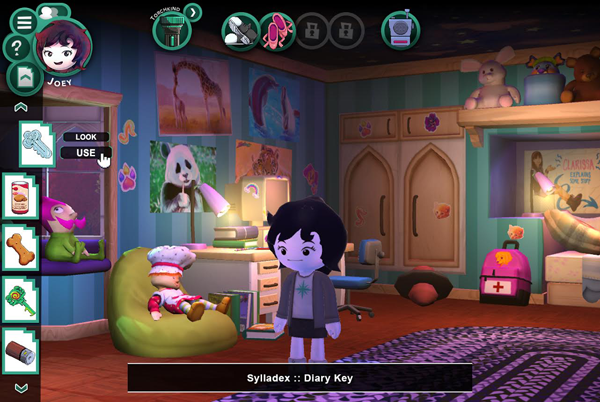
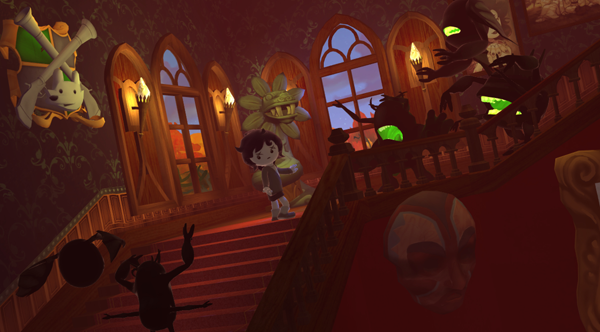
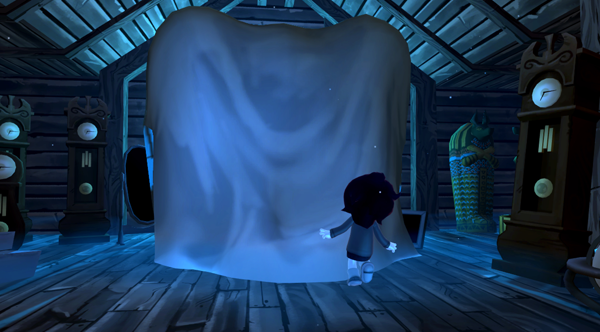
These screenshots (and a few others) were later put on Paperback Studios’ portfolio page for Hiveswap (although the format makes them hard to see).
September 2015: Undertale Releases
Undertale, Toby Fox’s kickstarter project from 2013, released in September 2015 on Steam for $9.99. It would later get ports to other platforms.
Although Toby Fox had no game development experience other than doing a few simple ROM hacks in high school, he wrote and programmed the entire game himself (with some artistic and design contributions from others, including Temmie Chang). He also composed the game’s entire musical score, a 100+ song soundtrack. The soundtrack was especially praised, and got a limited edition Vinyl printing which is now a highly sought-after collector’s item.
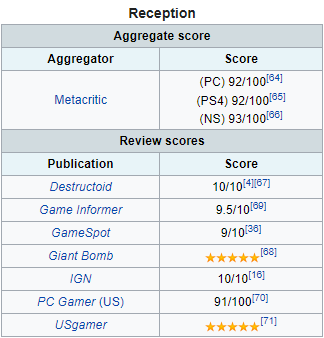
The game itself received extremely high critical acclaim, and was ranked #4 by metascore on Steam for 2015, just above Metal Gear Solid V: The Phantom Pain and several spots above Crypt of the NecroDancer, Fallout 4, and Prison Architect. At time of writing, the PC version of Undertale has sold between 2,000,000 and 5,000,000 copies on Steam.
In the credits of the game, he gives special thanks to a number of people, including Andrew5 and ipgd.
Next: the big change and the makings of Act 1
-
If you look at the campaign now, the “risks and challenges” section is empty. This isn’t anything untoward; this campaign was made in 2012, before the site had that field. ↩
-
Neither Andrew nor What Pumpkin ever announced how much money the campaign actually raised, in total, counting PayPal donations. We know it was at least enough to push the total over $2.5 million, but given that they had enough people asking for a PayPal option that they set up an entire secondary storefront for it, the total could be much more than that.The $2.5m+ mark was confirmed much later in Update 38. ↩ -
Not including the poster. Also note that they did resell plush scalemates, but they never strictly promised to keep the scalemates a Kickstarter exclusive. ↩
-
If you don’t believe ipgd’s account about getting a document with all this information, you might speculate that the framing story about the document is just a way to launder information she shouldn’t have had: she somehow knew details about the allegations she was making, but needed a way to explain how he got them. That would certainly explain how the allegations hold up. ↩
-
“Andrew” appeared multiple times in the credits, although neither entry had a last name attached. ↩


 fandom
fandom